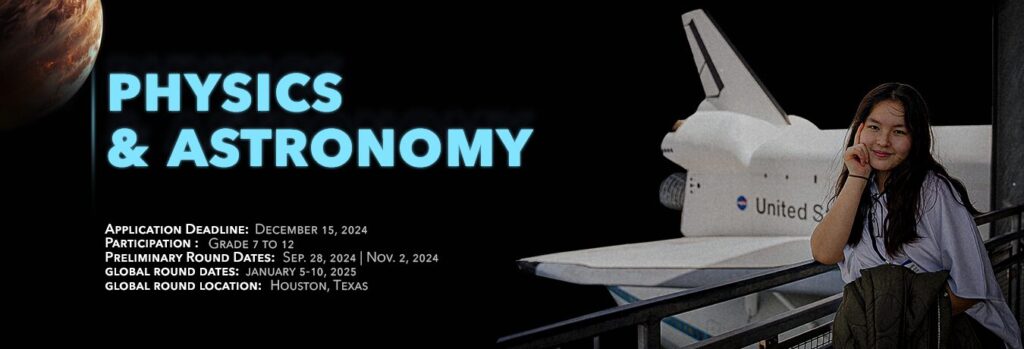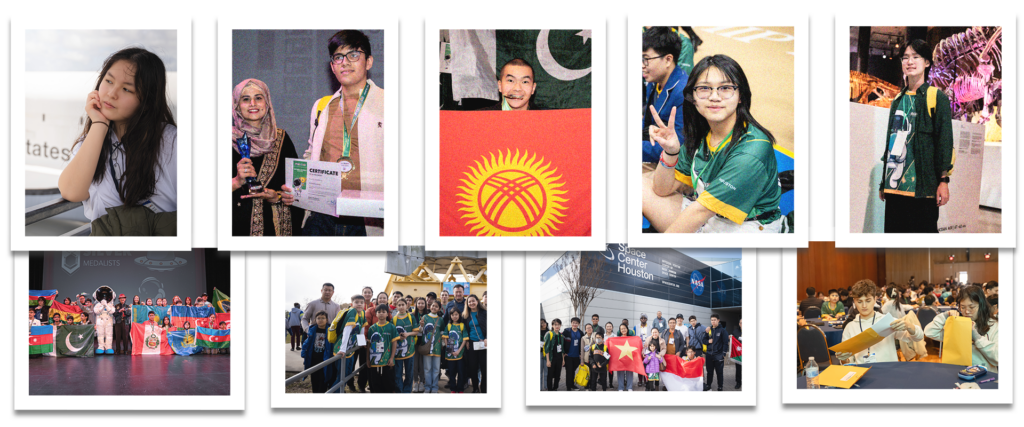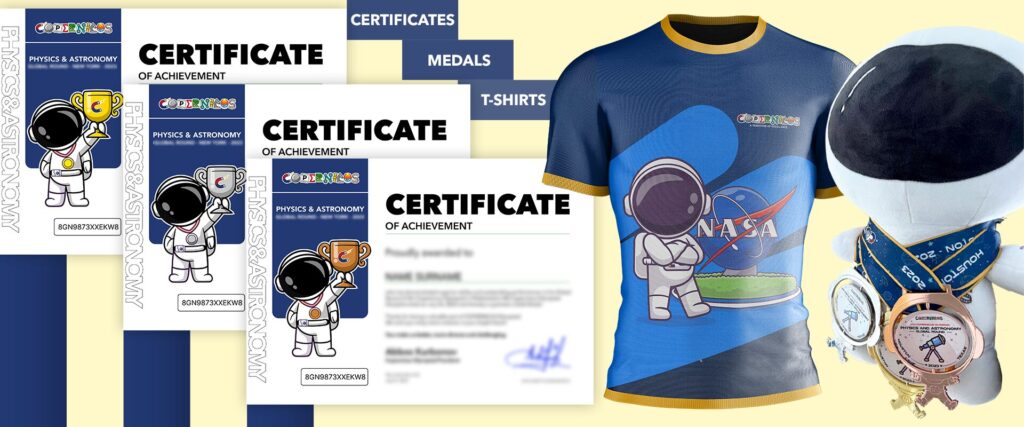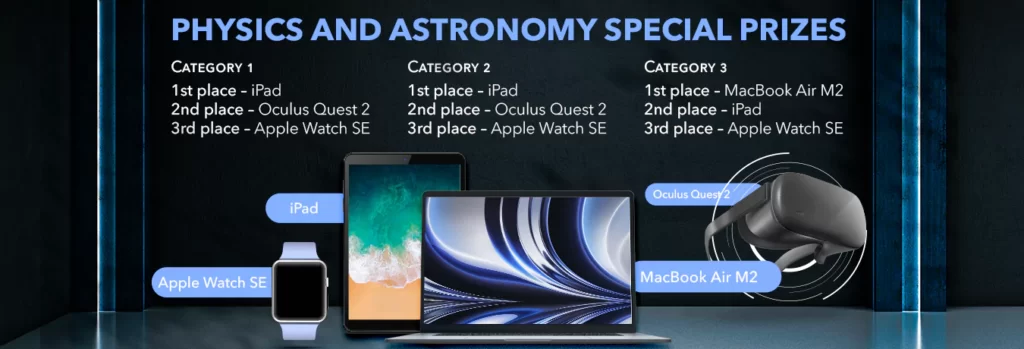
Physics and Astronomy Olympiad
Competitions that test knowledge in physics and astronomy serve a pivotal role in education and society. The goal of Copernicus Physics and Astronomy Olympiad is to encourage students to delve deeper into these subjects, fostering a love for learning and intellectual curiosity. The Copernicus Physics and Astronomy Olympiad hone critical thinking and problem-solving skills by pitting young minds against challenging problems and encouraging teamwork. Moreover, this Physics and Astronomy Competitions for Students creates a platform for budding scientists and astronomers to showcase their talents and innovations, ultimately nurturing the next generation of thinkers who will shape the future of science and technology. In a world increasingly reliant on scientific advancements, fostering expertise in physics and astronomy through competition is not just valuable; it’s essential for the progress and well-being of humanity.
- The Copernicus Physics and Astronomy Olympiad is an international event that is open to students from Grade 7 to 12.
- It is divided into two rounds – the Preliminary Round and the Global Round.
- Students can register to the event through an online registration via Copernicus Olympiad website or via official country representatives.
- All registered participants will take the online qualifying exam for the Preliminary Round which will be held on September 28 and November 2, 2024.
- Category 1 – Grade 7 and 8
- Category 2 – Grade 9 and 10
- Category 3 – Grade 11 and 12
- The Preliminary Round exam is all about Physics and Astronomy with sub-topics indicated in the syllabus provided.
- Students who get at least 40% in the qualifying exam become eligible to participate the Global Round.
- Regardless of score, all participants of Preliminary Round will receive a Certificate of Participation.
- Students who qualify for the Global Round will be awarded with a Certificate of Achievement and a medal according to the score they got in the Preliminary Round exam.
In the Preliminary Round, medals will be awarded based on the following percentages:
- 40% to 49% – Honorable Mention Certificate
- 50% to 74% – Bronze Medal
- 75% to 90% – Silver Medal + 5% off in the Global Round registration fees
- 91% to 100% – Gold Medal + 10% off in the Global Round registration fees
- Qualifiers to the Global Round must register again to the website or through official country representatives to indicate important travel documentation.
- The Global Round will be held between January 5 and 10, 2025 in Houston, Texas.
- The Global Round is a combination of exam, interactive challenges, and tour quizzes.

- The Global Round Exam consists of 25 multiple choice questions about Physics and Astronomy, with subtopics listed in the syllabus.
- The Global Round Exam consists of 25 multiple choice questions about Physics and Astronomy, with subtopics listed in the syllabus.
○ The Interactive Challenges are as follows:- Problem-Solving Challenge is a set of different physics games and puzzles to feed the interests of the young minds. It is basically a fun and exciting segment during the event, with the application of the learning in different fields of science.
- On-the-Spot Challenge is the part of the competition that is composed of impromptu challenges that allow students to put into practice their knowledge on astronomy. This provides an opportunity to learn astronomy in a more tangible way.
- The Tour Quizzes are 5 to 10 item questions that students will answer as they visit various educational places as part of the Physics and Astronomy Olympiad tour package.
- To determine the winners, scores of participants for each round will be gathered and computed based on the given percentages. Take note that scores will be computed individually.
- Global Round Exam = 80%
- Interactive Challenges = 10%
- Tour Quizzes = 10%
- Total = 100%

- In the Global Round, medals will be awarded based on the following percentages:
- The top 10% will receive a Gold Medal.
- The next 11-30% will receive a Silver Medal.
- The next 31-60% will receive a Bronze Medal.
- The next 61-75% will receive an Honorable Mention Certificate.
